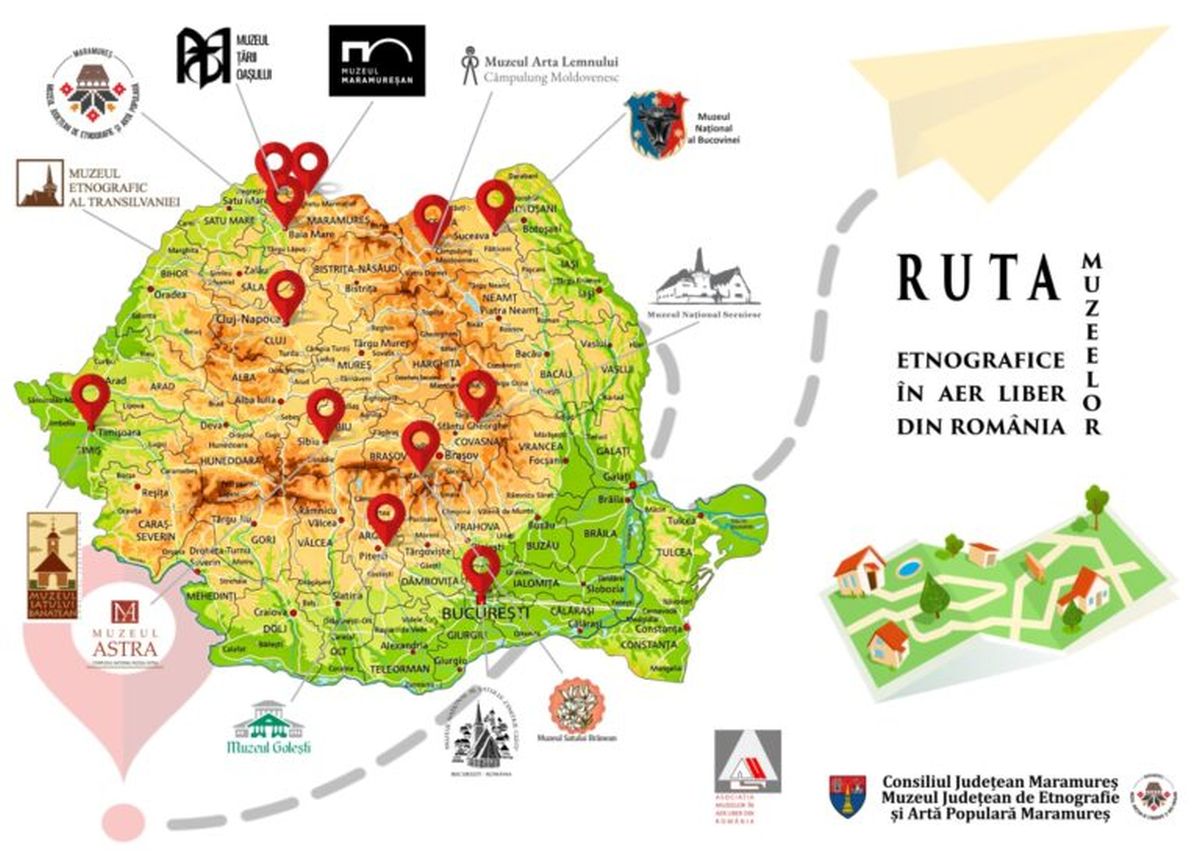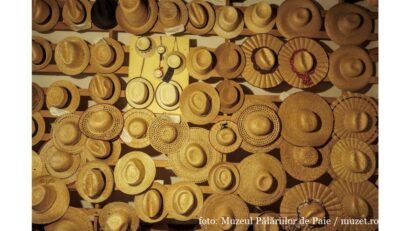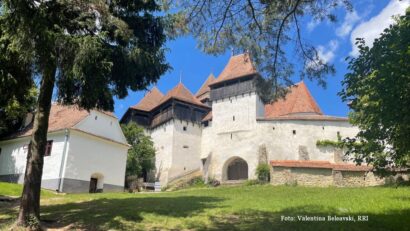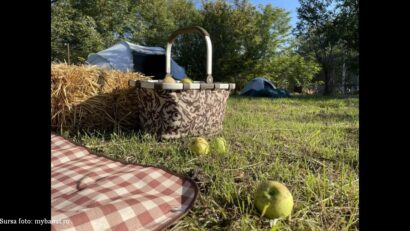The cultural-tourist route of open-air museums in Romania
The tourist program offers tourists a foray into traditions, in 11 tourist and cultural sites in Romania's ethnographic heritage.

Daniel Onea, 11.07.2024, 14:00
The cultural-tourist route of open-air museums in Romania, developed at the national level and recognized by the Ministry of Entrepreneurship and Tourism, has been launched in Romania considering the large number of tourists who showed interest in these objectives. Developed at the initiative of the County Museum of Ethnography and Folk Art in Baia Mare, the tourist program offers tourists a foray into traditions, in 11 tourist and cultural sites in Romania’s ethnographic heritage.
Monica Mare, the manager of the Maramureș County Museum of Ethnography and Folk Art from Baia Mare says that the idea was born out of the need to promote museums, being a good opportunity to capitalize on the heritage of traditional Romanian architecture: “The idea of the project initially started with eight museums. We have also created several leaflets on which one can find a map with these museums. If you are in Bucharest, you can start the route from there, from the Dimitrie Gusti Village Museum in Bucharest, which is probably the most visited among the ethnographic museums in Romania, and after that, you can head towards the center of Romania. Tourists can go through the Golești Museum, after that they can reach Brașov, then Sibiu, where they can go to the ASTRA Museum, then travel to Transylvania, to the museum in Cluj and get closer to Maramureș, where they will find two ethnographic museums included in the route, the Village Museum from Baia Mare and the Maramureș Village Museum from Sighetu Marmației, respectively. Also here, in our area, in Oraș Country, in the vicinity of Maramureș, we have the Negrești Oaş Museum, and if we cross the mountains, to Bukovina, we find the Bukovina Village Museum. It depends on how much time the tourist has to visit and we thought that this route can be fully covered or the visitor can choose, in a first phase, a few museums in the area of interest and after that we can arouse their curiosity to reach other areas of the country.”
All open-air museums develop projects throughout the year, but especially in the warm season, which is the high season for visiting. You will be able to see folk craftsmen at work and you will be able to buy items they have created. Moreover, you’ll even be able to participate in the crafting art of the artisans: “The Baia Mare Village Museum also has such programs. Throughout the year, we organize fairs, and we also have a souvenir shop, where we try to capitalize on the work of the Maramureș craftsmen. The other museums in the country also have such stores. Craftsmen need to be promoted. For the traditions to be passed on to future generations, the craftsmen must understand, especially the younger craftsmen who take over the crafts, that one can live from one’s craft and it is our duty, as ethnographic museums, to support the craftsmen, to make them known. Together with the centers of traditional culture, which have records of these craftsmen, we try to promote them at the travel fairs we participate in, and in the activities carried out by the museum.”
As soon as you enter the Maramureş-style gate of the Baia Mare Village Museum, you are transposed into a world of the authentic Maramureş village, says Monica Mare, manager of the Maramureș County Museum of Ethnography and Folk Art: “If the Museum in Sighet only preserves objects of traditional architecture from Maramureș Voivodeship, the Village Museum in Baia Mare takes you to the Maramureş villages from all four ethnographic areas. We call them countries: Codru, Chioar, Lăpuș and Maramureș Voivodeship. You can visit a house in Lăpuș, with its thatched roof. You can go inside and see how people used to live, where the fire was made, you can see the oven, or how the baby was rocked in the cradle, or what the guest room looked like, where the most beautiful textiles and the dowry chest were kept and where people met at major life events. The oldest monument we have is our little church, a monument from 1630, which is placed on the hill, as are most of the churches in the Maramureş villages, and practically the museum was formed around it. It was the first monument brought here to the Village Museum. It makes our village alive. The village on the hill, as we call it, is alive, because services are still held in the church on the big holidays and on Sundays. There is a whole community that comes here to worship.”
Another tourist asset promoted at Baia Mare’s Village Museum is the oldest house as part of the museum’s heritage, dated 1758.
Monica Mare: “The team I coordinate for the time being can boast the fact that, although the years are complicated and the budget is tight, as usual, last year we succeeded to open, for the public, a new traditional architecture asset we transferred to our museum. A house from Chioar Country, a very beautiful one, typical for the Chioar Country style, which we placed in the vicinity of the church, is also from Chioar Country. The blue of the house is so very specific for Maramures, it can be visited by tourists. Also, from Maramures Country we boast the Petrova House, where the founder of the Romanian School of Stomatology, Gheorghe Bilașcu, was born, and these are but a few of the landmarks we offer so you can pay us a visit. I am just saying, “Come on, come to Maramures !” Visit the Village Museum in Baia Mare and all the museums included in the Romanian open-air museum’s ethnographic route! ”
We found out from the manager of the Baia Mare-based Maramures County Ethnography and Traditional Art Museum, Monica Mare, that the available prospectuses are in Romanian and English. At the main assets as part of the visiting circuit there are plaques with a QR code for additional info, which direct you to the site of the institution, where translations are available in the most widely-spoken languages. In another move, children and youngsters can participate in a treasure hunt. They will be dared to cut themselves off from their own cell phones and visit the musem in a different manner. Also, the bigger museums lying along the cultural-tourist route of open-air museums in Romania have a wide range of promotion materials. The Museum in Sibiu, for instance, has Astra App, an application offering guidance, audio guidance included, in several of the most widely-spoken languages. (LS, EN)






























